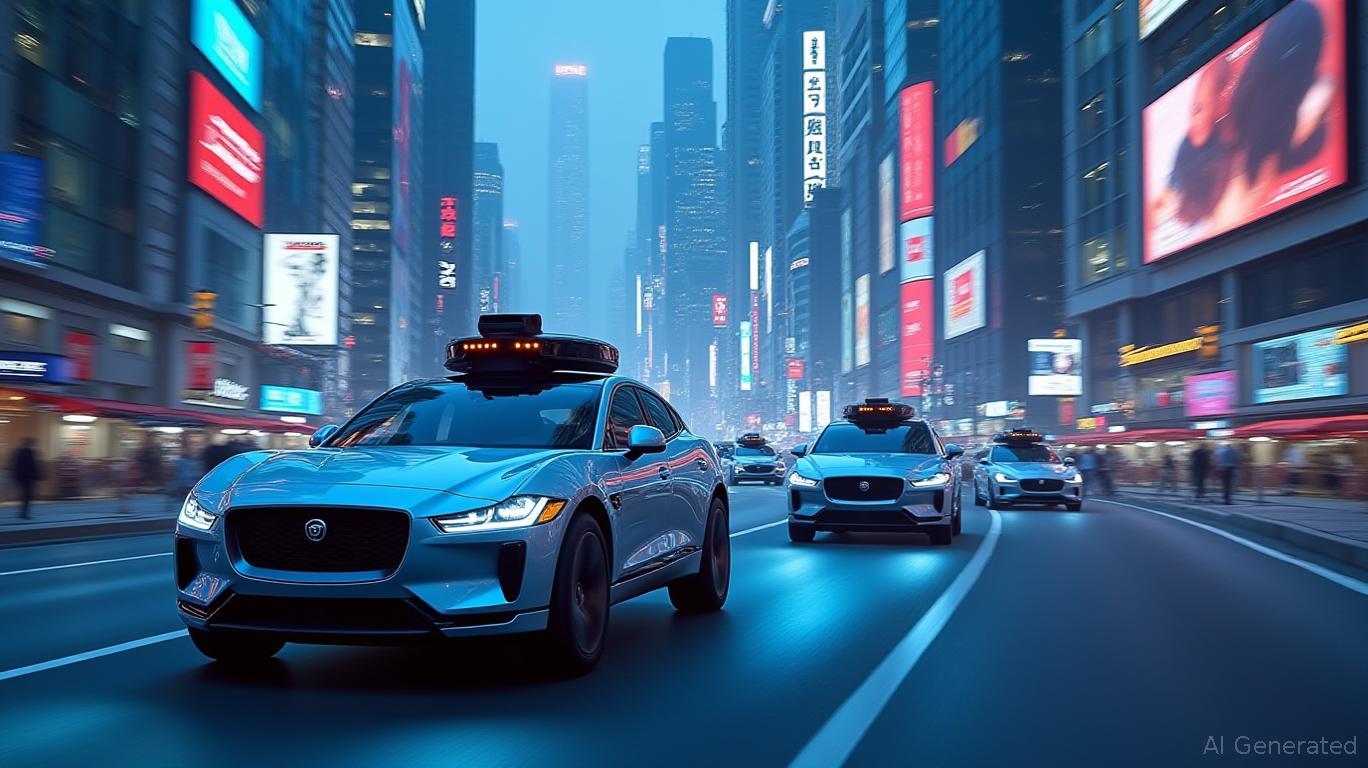Autonomous Ambitions: How Tech Giants Are Racing to Dominate the Robotaxi Market
The global autonomous vehicle market is on the cusp of a revolution, driven by tech titans investing billions to build factories, expand territories, and secure their place in the $2.3 trillion mobility-as-a-service (MaaS) future. From Silicon Valley to Shenzhen, companies like Waymo, Baidu, and Tesla are waging a high-stakes war to dominate the robotaxi sector. But with regulatory hurdles, infrastructure gaps, and financial risks looming, which players are best positioned to win?

Factory Expansions: The Manufacturing Muscle Behind the Robotaxi Race
To scale autonomous mobility, companies must control production. Waymo's $1.5 billion facility in Mesa, Arizona, is already churning out its sixth-generation “Waymo Driver” system, capable of supporting tens of thousands of vehicles annually. Meanwhile, Baidu's RT6 robotaxi—priced under $30,000—will roll off assembly lines in Wuhan, targeting mass production to undercut rivals.
Tesla's ambitions are equally bold: its Texas factory plans to produce a purpose-built robotaxi by 2026, leveraging its existing electric vehicle (EV) expertise. hints at investor confidence in its vertical integration strategy.
Territorial Battles: Where the Wars Are Being Fought
The robotaxi market is split into three key regions:
- Asia-Pacific Dominance:
- China: Baidu's Apollo Go service has already clocked 1.1 million rides in Q4 2024, with plans to expand to 100+ cities by 2030. Government subsidies and laxer regulations give local firms an edge.
India: BMW's 2019 factory expansion in India highlights the scramble to capture emerging markets, though poor infrastructure remains a hurdle.
North America's Tech Hub:
- Waymo: Leading the U.S. with 1,500 vehicles, Waymo is expanding to 20+ cities by 2028. Its $5.6 billion funding round in 2024 underscores Alphabet's (GOOGL) commitment.
Cruise (GM): Despite halting standalone robotaxi services in 2023, Cruise's $10 billion investment in GM's Super Cruise ADAS technology aims to dominate urban micro-mobility.
Europe and Beyond:
- Europe: The EU's 55% CAGR growth rate is fueled by strict safety standards and public-private partnerships. Startups like EasyMile are testing autonomous shuttles in Amsterdam and Lyon.
- Middle East: Dubai's goal of 25% autonomous trips by 2030 has drawn players like Careem (now part of Uber) to deploy 500 robotaxis by 2025.
Key Players and Their Playbooks
- Waymo (Alphabet):
- Strengths: Largest commercial fleet (1,500+ vehicles), advanced L4 autonomy, and partnerships with Hyundai and Jaguar.
Risk: Reliance on Alphabet's cash reserves amid losses.
Baidu:
- Strengths: Aggressive expansion in China, cost-efficient RT6 production, and government backing.
Risk: Overexposure to a single market.
Tesla:
- Strengths: Decentralized model (owners can add cars to its fleet), $10 billion invested in FSD training.
Risk: Regulatory delays in full autonomy certification.
NVIDIA:
- Role: Provides the AI “brains” (DRIVE Orin/Thor) for Waymo, Tesla, and Mercedes-Benz.
- Investment Angle: A semiconductor play with exposure to every autonomous vehicle.
Challenges Ahead
- Cybersecurity: The 2015 Jeep Cherokee hack remains a cautionary tale. Companies like Waymo and Tesla must invest heavily in secure systems.
- Infrastructure Gaps: Developing regions like India lack road sensors and 5G networks, slowing adoption.
- Profitability: While Baidu aims for Apollo Go profitability in 2025, most firms remain loss-making.
Investment Implications
The robotaxi war isn't just about cars—it's about data, software, and scale. Here's how to play it:
- Leadership Stocks:
- Waymo (Alphabet): Backed by deep pockets and a first-mover advantage.
Baidu (BIDU): Leverage China's dominance in EV manufacturing and MaaS.
Enablers:
- NVIDIA (NVDA): A must-own for its AI hardware powering autonomous systems.
Mobileye (INTC): Intel's ADAS division supplies 190 million vehicles with its EyeQ chips.
Risks to Avoid:
- Companies reliant on standalone robotaxi fleets (e.g., Cruise's paused operations).
- Firms without partnerships or infrastructure (e.g., Pony.ai's 60% revenue drop in robotaxis).
Conclusion
The robotaxi market is a high-reward, high-risk frontier. Investors should prioritize companies with diversified revenue streams, strong partnerships, and factories that can scale. While Waymo and Baidu are early leaders, Tesla's crowdsourced model and NVIDIA's AI backbone could redefine the game. As the world shifts from car ownership to MaaS, the winners will be those who master both the hardware and the data—before regulations or infrastructure gaps catch up.
The next decade will belong to the autonomous titans. Will you bet on them?

Comments
No comments yet